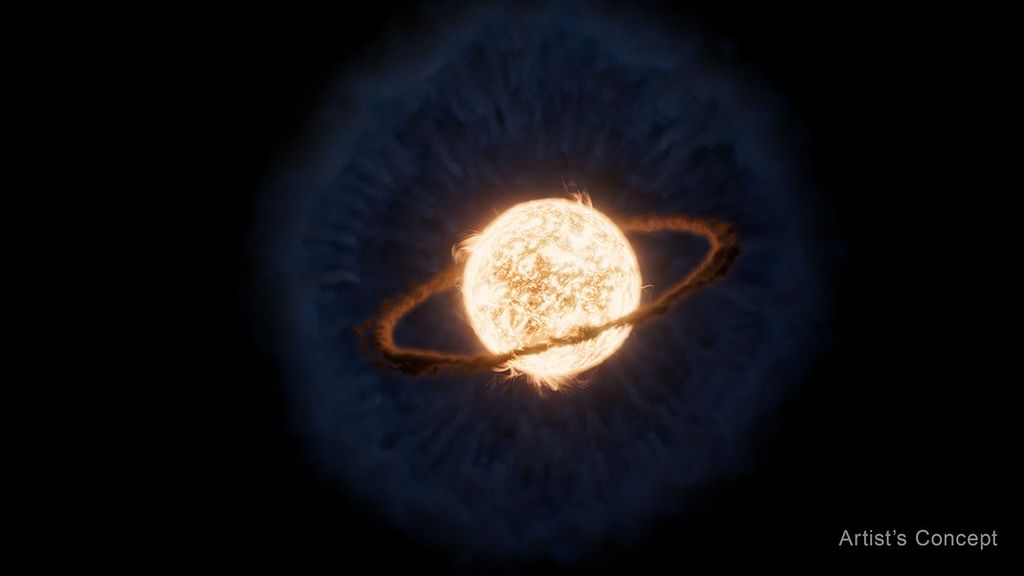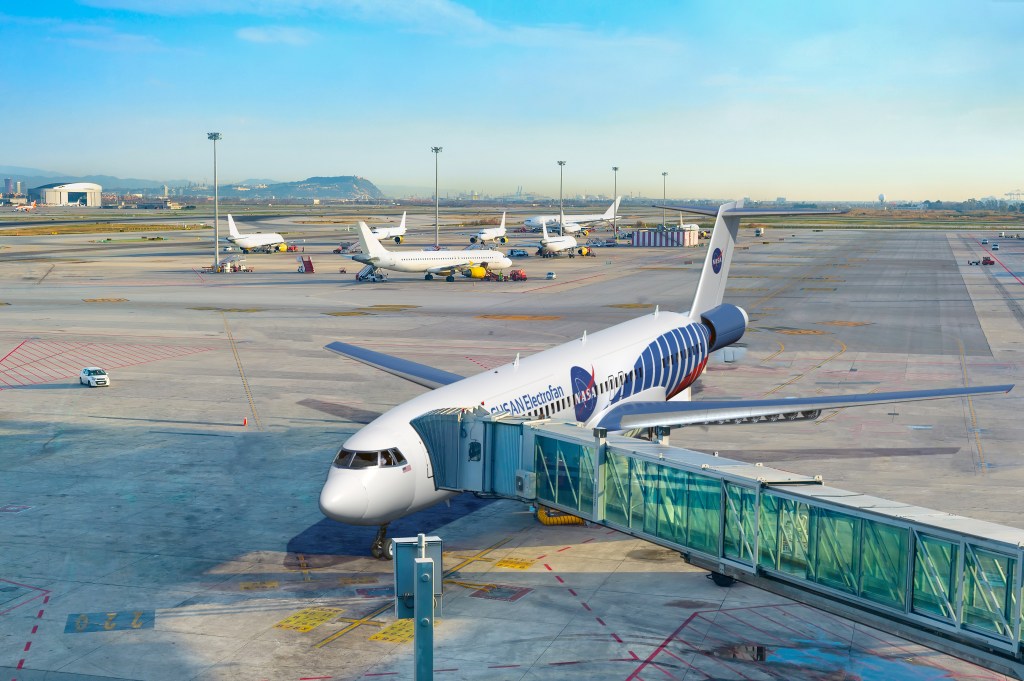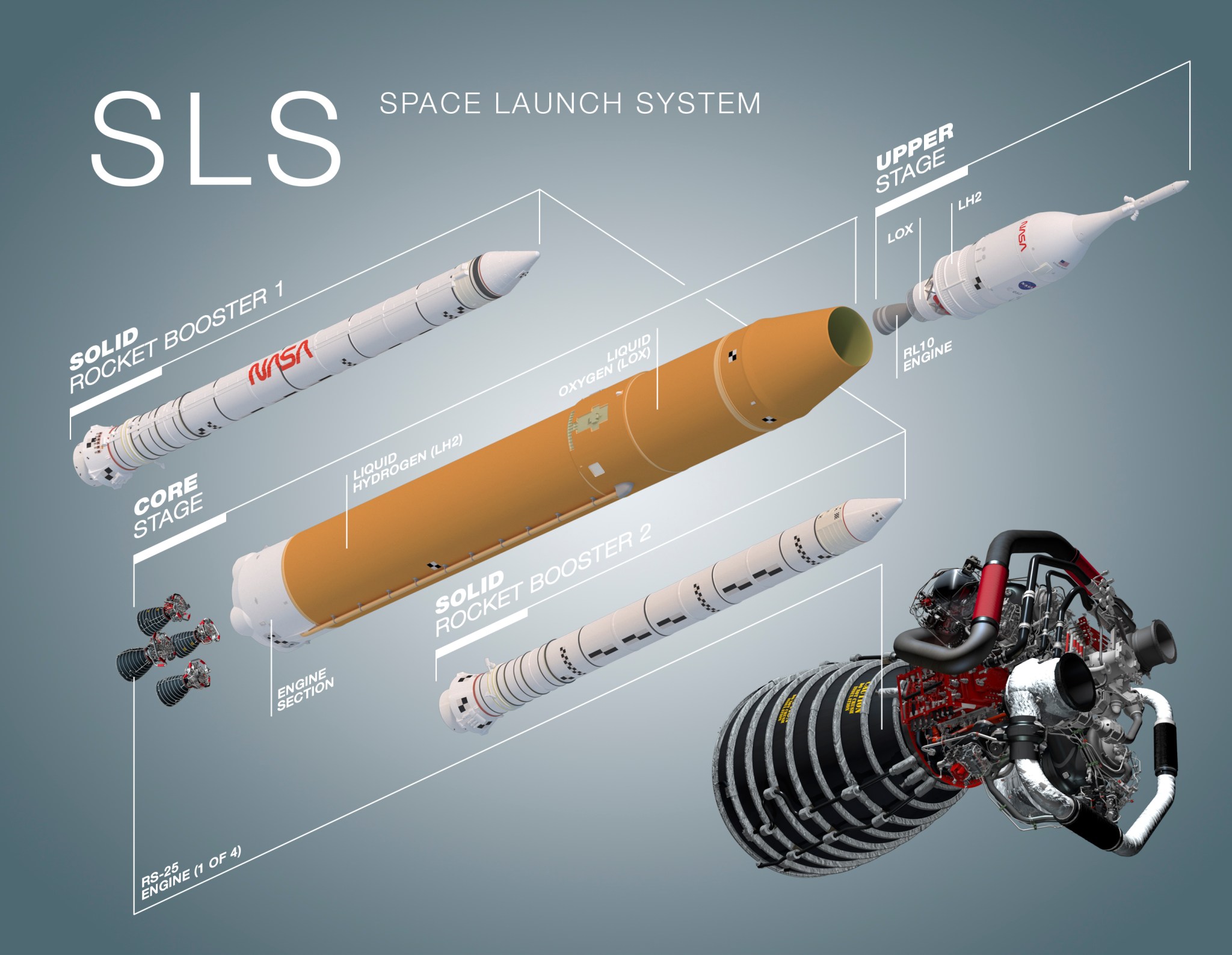On Earth, many cars on the road are powered by engines that convert fuel into energy to produce motion. Although rocket science is a little more complex, the same basic principle applies to the engines and motors that will help power a journey to the Moon. On upcoming Artemis missions, the Space Launch System (SLS) rocket and Orion spacecraft will be equipped with several different types of engines and motors. From liftoff to splashdown, these engines and motors will send the first SLS rocket and the Orion spacecraft on the Artemis I mission, out beyond the Moon and farther than any spacecraft built for humans has ever ventured. Missions at the Moon will be a steppingstone to prepare for human exploration of Mars.
On the first Artemis mission, a combined total of 55 engines and motors between the SLS rocket and Orion spacecraft will propel Orion from the launch pad, around the Moon, and back to Earth. A motor is generally defined as a device that produces motion, and an engine is considered a type of motor that produces motion with the use of moving parts. In rocket science, these terms are typically used to differentiate between rocket motors with solid fuel, that do not employ moving parts to generate thrust, and engines that use moving parts such as pumps and valves to direct liquid fuel through the system. Solid rocket motors may still include moving parts to steer and direct the thrust.
The initial configuration of the SLS rocket, called Block 1, will be used on the first three Artemis missions and stands 322 feet tall, which is taller than the Statue of Liberty. It weighs 5.75 million pounds and produces 8.8 million pounds of thrust during launch and ascent with the power of four RS-25 engines and two solid rocket motors, commonly called boosters. Each booster is equipped with an ignition motor that ignites the solid propellant. About two minutes into flight, the boosters will separate from the rocket and the RS-25 engines on the core stage will continue propelling Orion to orbit. Next, the fairings will be released to expose the service module, and the jettison motor will fire to separate the launch abort system from the spacecraft. The launch abort system is no longer needed at this point, as Orion can safely abort using the engines on the European Service Module, provided by ESA (European Space Agency).
About eight minutes after launch, the RS-25 engines will shut down and the core stage will separate from Orion and the Interim Cryogenic Propulsion Stage (ICPS). The RS-25’s smaller sibling, the RL10 engine, will take over on the ICPS. The RL10 engine will fire for less than one minute to position Orion ahead of a longer burn that will accelerate the spacecraft fast enough to break away from the pull of Earth’s gravity and set a course with a precise trajectory to the Moon. After the RL10 engine has completed the burn to send Orion to the Moon, the ICPS will separate from Orion and the service module will use a combined total of 33 engines to propel and position the spacecraft during the mission until it is time for Orion to re-enter Earth’s atmosphere. The service module’s propulsion system can fire for less than a second for spacecraft maneuvering or, in certain emergency situations, the main engine can fire for more than 10 minutes to perform potential abort scenarios.
Just before re-entry, the service module will separate from Orion. As Orion prepares to splashdown into the Pacific Ocean, the 12 reaction control system engines on the crew module will ensure the spacecraft is properly oriented, with its heat shield pointed downward for entry through Earth’s atmosphere, and stable during descent.
Fast Facts
Below are the basic facts about each of the engines and motors that will propel Artemis missions. While most people typically think of fueling a car with gas for propulsion in automobiles, fuel is only one part of the combustion equation for propulsion. Combustion occurs when a fuel is combined with oxygen to produce energy to propel a vehicle. In automobiles, oxygen from the atmosphere combines with gasoline and an ignition source to run a combustion engine. In rocket science, propellants may include both fuel and a chemical oxidizer that releases oxygen. When the fuel and oxidizer combine, they ignite through a chemical reaction, and the hot, rapidly expanding gases look for a way out and move the rocket or spacecraft in the opposite direction.
SLS Rocket: From Launch to Lunar Orbit
2 x Solid Rocket Boosters, built by Northrop Grumman
Location: On either side of the SLS rocket core stage
Propellants: Solid fuel – polybutadiene acrylonitrile (PBAN), oxidizer – ammonium perchlorate
Burn Duration: About 2 minutes
Function: Together the twin boosters provide more than 75% of the total thrust at liftoff. Each booster generates a maximum thrust of 3.6 million pounds and will burn 6 tons of solid propellant every second before separating from the core stage.
Additional Info: Each booster is taller than the Statue of Liberty at 17 stories tall and weighs over 1.6 million pounds. The solid propellant used in each of the five segments of the booster is the consistency of a pencil eraser.
› Solid Rocket Booster Infographic
› Solid Rocket Booster Fact Sheet
2 x Booster Ignition Motors, built by Northrop Grumman
Located: At the top of the stack of five solid propellant segments on each booster
Propellants: Solid fuel – polybutadiene acrylonitrile (PBAN), oxidizer – ammonium perchlorate
Burn Duration: Less than a second
Function: These motors ignite the solid propellant in each solid rocket booster at liftoff.
4 x RS-25 Engines, built by Aerojet Rocketdyne
Location: On the bottom of core stage of the SLS rocket
Propellants: Liquid fuel – liquid hydrogen, oxidizer- liquid oxygen
Burn Duration: About 8 minutes
Function: Together, the set of four-engines generates more than 2 million pounds of thrust for the climb to overcome the pull of Earth’s gravity. The engines will burn more than 90,000 gallons of liquid hydrogen and liquid oxygen every minute before the core stage separates from the ICPS and Orion.
Additional Info: The four engines on the first Artemis mission were previously flown on the space shuttle and contributed to 21 successful shuttle flights. The engines have been updated and provide more thrust to meet SLS performance requirements. Just one turbine blade the size of a quarter on the RS-25’s high pressure fuel turbopump generates more horsepower than a Corvette engine.
› What Is The RS-25 Engine? Infographic
› RS-25 Core Stage Engine Fact Sheet
1 x RL10 Engine, built by Aerojet Rocketdyne
Location: On the bottom of the ICPS
Propellants: Liquid fuel – liquid hydrogen, oxidizer- liquid oxygen
Burn Duration: Ranges from less than 1 minute to about 20 minutes
Function: The single RL10 engine on the Interim Cryogenic Propulsion Stage (ICPS) performs two burns. The first burn raises the Orion spacecraft after core stage separation to put the ship in a stable orbit around the Earth. The second burn will generate 24,750 pounds of thrust to propel the Orion spacecraft out of Earth’s orbit to set it on its precise trajectory to the Moon. The RL10 will boost Orion for 7,700 miles before separating from the spacecraft.
Additional Info: Future configurations of SLS will use a total of four RL10 engines for the powerful exploration upper stage that will enable NASA to send Orion along with hardware or supplies, or other large cargo missions.
› What Is the Exploration Upper Stage? Infographic
Orion: Around the Moon and Back to Earth
1 x Launch Abort System (LAS) Jettison motor, built by Aerojet Rocketdyne
Location: On the Launch Abort System tower between the abort motor and the attitude control motor
Propellants: Solid fuel – hydroxyl-terminated polybutadiene (HTPB), oxidizer – Ammonium Perchlorate
Burn Duration: About 1.5 seconds
Function: The motor fires during a normal launch sequence to separate the launch abort system from Orion when it is no longer needed or following an abort to allow Orion to deploy parachutes for a safe splashdown in the ocean. In the unlikely event of an emergency during launch or ascent, the jettison motor will provide approximately 40,000 pounds of thrust to separate the LAS from the crew module during an abort.
Additional Info: The jettison motor is the only motor on the launch abort system that fires during every mission. The abort motor and attitude control motors will not be active on the Artemis I mission.
› Launch Abort System Fact Sheet
1 x Orbital Maneuvering System Engine (OMS-E), built by Aerojet Rocketdyne
Location: On the bottom of the service module
Propellants: Liquid fuel – monomethyl hydrazine (MMH), oxidizer – oxides of nitrogen (MON)
Burn Duration: Ranges from less than one minute to more than 16 minutes
Function: This is the main engine on the European Service Module that will provide the primary propulsion for Orion’s major in-space maneuvers as it travels around the Moon. The engine provides 6,000 pounds of thrust and is equipped to steer the spacecraft. It can also be used in some abort cases to safely return Orion to Earth.
Additional Info: The main engine on the first mission is a repurposed Space Shuttle Orbital Maneuvering System engine that has flown in space before. The engine flying on Artemis 1 flew on 19 space shuttle flights, beginning with STS-41G in October 1984 and ending with STS-112 in October 2002.
8 x R-4D-11 Auxiliary Engines, built by Aerojet Rocketdyne
Location: On the bottom of the service module in four sets of two
Propellants: Liquid fuel – monomethyl hydrazine (MMH), oxidizer – oxides of nitrogen (MON)
Burn Duration: Ranges from less than one minute to up to 45 minutes
Function: These are fixed at the bottom of the service module to provide trajectory corrections and as a backup to the main engine. Each provide about 100 pounds of thrust. The auxiliary engines can provide steering during burns by pulsing on and off.
24 x Reaction Control System Engines, built by ArianeGroup
Location: On the sides of the service module in six sets of four
Propellants: Liquid fuel – monomethyl hydrazine (MMH), oxidizer – oxides of nitrogen (MON)
Burn Duration: Ranges from milliseconds up to one hour
Function: These engines are in fixed positions and can be fired individually as needed to move the spacecraft in different directions or rotate it into any position. Each engine provides about 50 pounds of thrust.
12 x MR-104G Reaction Control System Engines, built by Aerojet Rocketdyne
Location: On the backshell of Orion in six sets of two
Propellants: Liquid fuel – hydrazine
Burn Duration: Ranges from less than one second up to 50 seconds
Function: The reaction control system will guide the Orion crew module after it separates from its service module in preparation for re-entering Earth’s atmosphere and splashdown into the ocean. Capable of 160 pounds of thrust for each engine, the system will ensure the spacecraft is properly oriented for re-entry, with its heat shield pointed forward, and stable during descent under parachutes.
Additional Info: These are monopropellant engines that produces hot gas and thrust when the fuel decomposes as it passes across a catalyst material without separate oxidizer.
Other Orion Motors
The launch abort system contains two additional motors that will not be active on the uncrewed first flight of SLS and Orion. The Ascent Abort-2 test of the launch abort system in July 2019 has prepared this capability for the first flight with crew on Artemis II.
1 x Launch Abort System Abort Motor, built by Northrop Grumman
Location: On the launch abort system tower, between the crew module and the jettison motor
Propellants: Solid fuel – hydroxyl-terminated polybutadiene (HTPB), oxidizer – Ammonium Perchlorate
Burn Duration: About 3 seconds
Function: In the event of an emergency on the launch pad or during ascent, the abort motor fires, producing about 400,000 pounds of thrust, to quickly pull the crew capsule away from danger.
1 x Launch Abort System Attitude Control Motor, built by Northrop Grumman
Location: At the very top of the launch abort system tower
Propellants: Solid fuel – carboxyl-terminated polybutadiene (CTPB), oxidizer – Ammonium Perchlorate
Burn Duration: About 30 seconds
Function: As the abort motor pulls Orion away from the rocket during an emergency on the pad or during launch, the LAS attitude control motor fires and provides variable thrust as needed to stabilize the crew capsule and steer it in any direction to re-orient it before the LAS is jettisoned in preparation for parachute deployment and splashdown. The motor can exert up to 7,000 pounds of steering force in any direction.
Additional Info: The attitude control motor consists of a solid propellant gas generator with eight valves equally spaced around the outside of the three-foot diameter motor.
Though not part of the overall system that will propel the rocket or spacecraft during the mission, several other specially designed motors, thrusters, springs and pyrotechnic bolts will play a role to separate hardware through different phases of the mission, such as separating the core stage, boosters, fairings, service module or parachute cover when they are no longer needed. All the elements throughout the complex system will work together in a precisely timed choreography to put the first Artemis mission in motion.
With Artemis, NASA will land the first woman and the first person of color on the lunar surface and establish long-term exploration at the Moon in preparation for human missions to Mars. SLS and NASA’s Orion spacecraft, along with the human landing system and the Gateway in orbit around the Moon, are NASA’s foundation for deep space exploration.






























